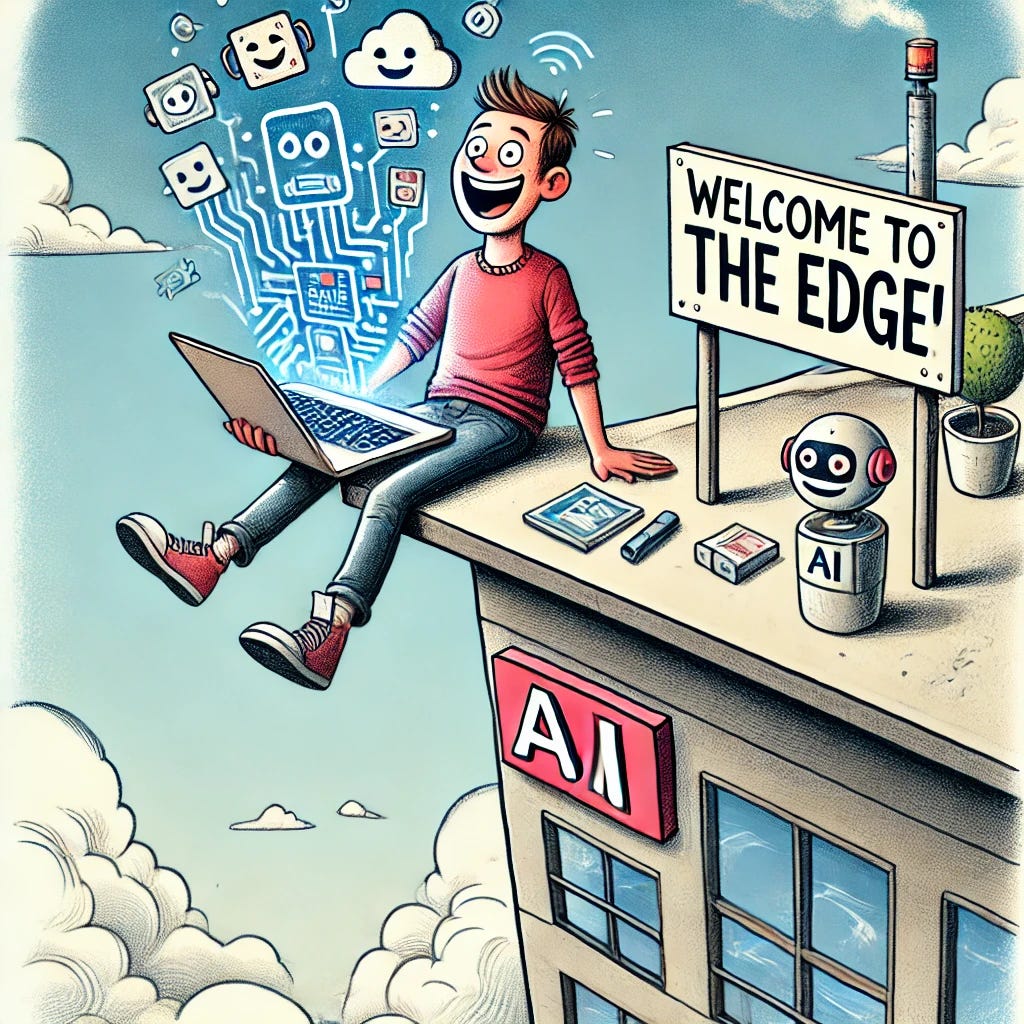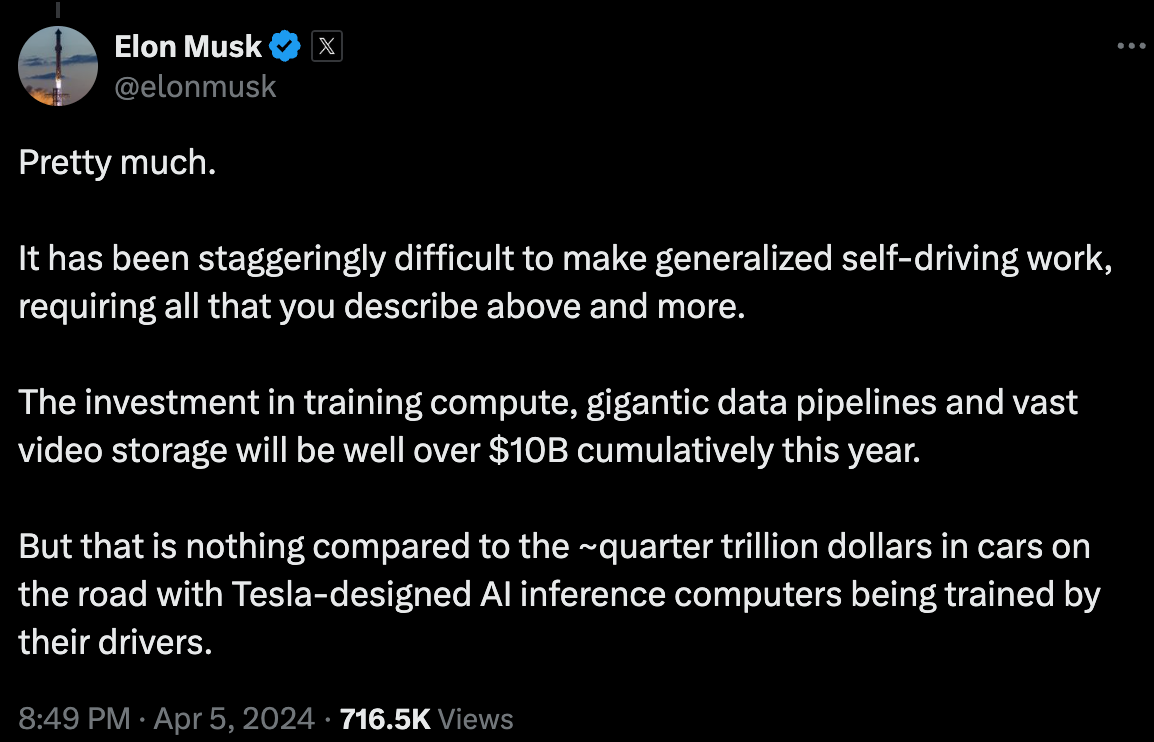According to a response from Elon Musk on X, Tesla’s investment in training computing, data pipelines, and video storage is set to exceed $10 billion this year. Have you ever wondered what this $10 billion is for?
It’s an investment in edge AI—a critical technology that allows Tesla’s vehicles to make decisions locally, without relying on constant cloud communication. This massive investment aims to enhance the on-board computing power in Tesla’s vehicles, making real-time decision-making faster and more reliable, especially in autonomous driving scenarios.
Our clients have been asking about Edge AI and how the market may change as a result of few key trends:
Introduction of reasoning models that are small and efficient
Plateauing of model performance gains in pre-training
Privacy and security requirements preventing cloud AI usage
The interest is clear: organizations across industries are recognizing the transformative power of Edge AI to enhance operations, improve efficiency, and reduce costs. By investing in Edge AI, companies can bring intelligence directly to their devices, allowing for real-time decision-making that bypasses the latency and privacy concerns associated with cloud computing. Forget the old story where all the heavy lifting happened in the distant cloud.
Instead, we're seeing a radical shift: the power of AI is moving closer to you, to your fingertips, right into the very devices in your pocket, your car, your kitchen, and your workspace.
We will talk about:
What Exactly is Edge AI? Difference Between Cloud AI vs. Edge AI
Edge AI Market CAGR to 2034
Generative AI in the Edge. Why Move LLM Compute to the Edge?
How to Make Edge AI Optimized Models?
High Potential Edge AI Revenue Generating Use Cases
Edge AI Value Chain: Leading Players
Please note: The insights presented in this article are derived from confidential consultations our team has conducted with clients across private equity, hedge funds, startups, and investment banks, facilitated through specialized expert networks. Due to our agreements with these networks, we cannot reveal specific names from these discussions. Therefore, we offer a summarized version of these insights, ensuring valuable content while upholding our confidentiality commitments.
What Exactly is Edge AI? Difference Between Cloud AI vs. Edge AI
Edge AI is the deployment of AI models directly on local devices or servers close to the user—no cloud required. Picture an AI model analyzing a live video feed from your phone camera, instantly providing insights without ever bouncing data up to the cloud. It's about delivering intelligence where it matters most: at the “edge” of the network, on devices like laptops, smartphones, smart speakers, IoT sensors, drones, or even that little security camera by your front door.
Recent published paper,



